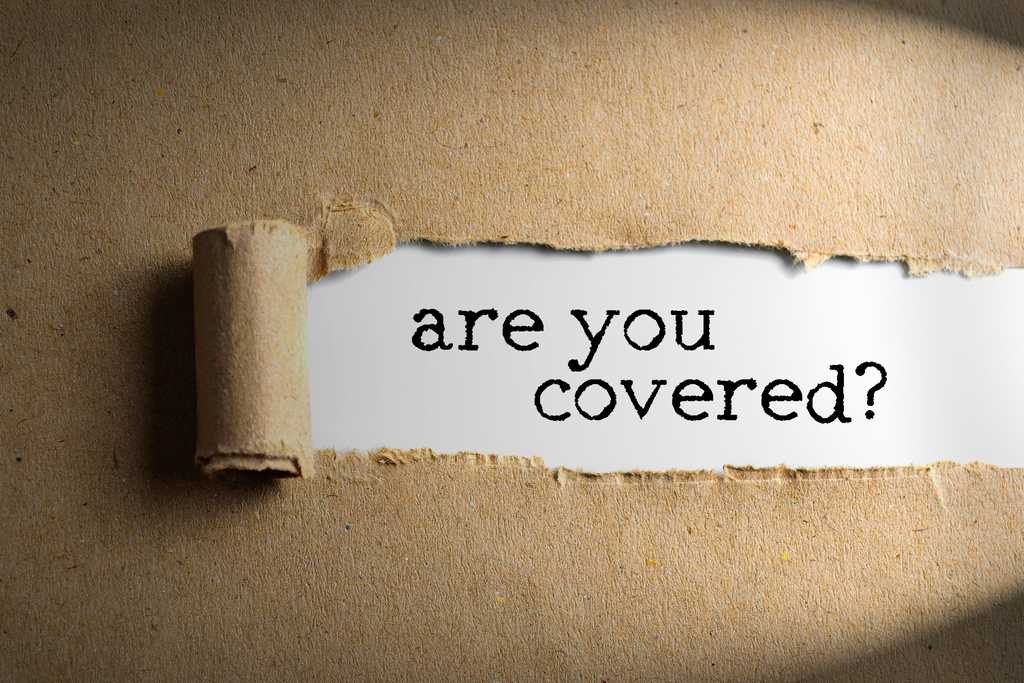There may be very few times in your life when you’ll make a six-figure purchase (or higher), such as buying a home. Imagine losing your home and its contents in a fire. Will you have the cash to rebuild your home and replace what you lost?
Chances are, you don’t have a few hundred thousand dollars on standby for such an emergency. That’s what home insurance is for — and why your mortgage lender requires you to have coverage. Homeowners insurance protects your investment by stepping in to pay or reimburse you for your home and your belongings if something goes wrong.
Once you start shopping around for coverage, you’ll find that a home insurance policy comes with different components — and plenty of add-ons you can buy. The question is, what does homeowners insurance cover and what exactly do you need?
What Does Homeowners Insurance Cover?
In most cases, your homeowners insurance coverage will break down into five main parts:
- Dwelling: Your home’s building or structure, as well as other buildings on the property, such as tool sheds or carports
- Personal property: Your belongings and the home’s contents, such as the flooring, furniture, countertops and appliances
- Liability: Legal expenses such as lawyer’s fees and judgments, payments to guests or visitors for injuries and damages that happened on your property
- Medical: Smaller payments to others for injuries and medical bills
- Additional living expenses: Your expenses for renting a home or paying for a hotel if your house is temporarily uninhabitable because of a covered risk, such as fire, water or smoke damage
Homeowners insurance forms
You may hear your insurance agent refer to your coverage as HO-3 or HO-6, a couple of the most common homeowners insurance types. Home insurance is packaged and labeled with a code of “HO” (for homeowners), followed by a number. An HO-3 and HO-6 may sound similar, but they are made for very different types of homeowners. Here’s what the homeowners insurance forms include:
HO-1
An HO-1 is typically the cheapest and most basic home insurance form. It only includes 10 perils (risks). HO-1s don’t include liability insurance to cover legal expenses and damages/injuries caused to others. Although it’s the least expensive home insurance policy, it won’t be enough to satisfy a home lender’s insurance requirements and is rarely offered nowadays.
HO-2
Also known as broad form insurance, an HO-2 includes 16 of the most common perils, including theft, fire, sudden water damage from a broken water pipe, vandalism and hail damage, but has no liability coverage. You’ll receive:
- Replacement cost (the amount needed to replace or rebuild at the time of the loss) for the home
- Actual cash value (a reduced or depreciated amount that depends on the item’s age and condition) for personal property (the home’s contents)
HO-3
Sometimes called special form insurance, HO-3 is the most common type of homeowners insurance sold and the minimum amount of coverage your mortgage lender will ask for. HO-3 insurance includes:
- All risks and perils for the dwelling that are not excluded in writing
- Named risks for personal property
- Liability insurance
- Medical coverage
- Additional living expenses
HO-4
Designed for renters, HO-4 insurance only has liability and personal property coverage for named perils since you don’t own the dwelling. You’ll typically receive replacement cost for your belongings so you can buy a newer, available version of your items.
HO-5
The most comprehensive and expensive homeowners insurance form, an HO-5 is best for homes that are newer, lower-risk and/or higher-value. You’ll receive replacement cost for your dwelling and personal property for all events not excluded in the policy. In addition, the limits on personal property will be higher to cover more expensive items such as jewelry, designer clothing, higher-end appliances and electronics.
HO-6
Insuring a co-op or condominium is slightly different because you have common areas and shared expenses with your neighbors. An HO-6 is packaged just for condo owners. It’s flexible to account for the high probability that the condo’ fees you pay already include dwelling insurance. Therefore, HO-6 insurance includes personal property and liability, but dwelling coverage is optional.
HO-7
If you live in a mobile home, manufactured home or “tiny house”, you’ll need HO-7 insurance to cover your unique abode. A mobile home form includes dwelling replacement value for all risks not excluded in the policy and personal property cash value for named perils.
HO-8
Some homes are hard to insure because of their age or the materials they’re constructed with. The modified coverage form was created for houses that may end up costing more to rebuild than their market value, such as older or historical homes. An HO-8 policy is set up as named-peril cash value for the dwelling and personal property to keep it relatively affordable.
Quick Reference: What Does Homeowners Insurance Cover?
| Home insurance form | Best for | Dwelling | Personal property | Perils | Liability coverage? |
|---|---|---|---|---|---|
HO-1, basic form | Homeowners with no mortgage in need of minimal coverage | Named perils, replacement cost or actual cash value | Named perils, actual cash value | 10 | X |
HO-2, broad form | Homeowners with no mortgage in need of expanded coverage | Named perils, replacement cost | Named perils, replacement cost or actual cash value | 16 | X |
HO-3, special form | Homeowners with a mortgage | All risks, replacement cost | Named perils, actual cash value | All for dwelling, unless specifically excluded | ✓ |
HO-4, renters form | Renters | X | Named perils, replacement cost | 16 | ✓ |
HO-5, comprehensive form | Owners of newer homes with a mortgage | All risks, replacement cost | All risks, replacement cost | All unless specifically excluded | ✓ |
HO-6, unit owners form | Condo owners | optional | Named peril, replacement cost or actual cash value | 16 | ✓ |
HO-7, mobile home form | Mobile home and RV owners | All risks, replacement cost | Named perils, actual cash value | All for dwelling, unless specifically excluded | ✓ |
HO-8, modified coverage form | Owners of older, harder-to-insure or historic homes | Named perils, actual cash value | Named perils, actual cash value | 10 | ✓ |
What Doesn't Homeowners Insurance Cover?
Now that you have a good idea of what home insurance covers, it’s good to be aware of what it doesn’t. Home insurance will not pay for:
- Deferred maintenance: Putting off maintenance and repairs could lead to bigger, more expensive issues. Your insurance carrier won’t cover damages due to neglect.
- Floods and earthquakes: Many places aren’t prone to flooding and earthquakes. But if you live in a high-risk zone for either type of natural disaster, you can purchase flood or earthquake insurance separately. The Federal Emergency Management Agency (FEMA) created the National Flood Insurance Program to provide affordable coverage.
- Certain water damage: Damage because of a slow leak or sewage backup isn’t covered. You can add a sewage backup endorsement.
- Mudslides, landslides and sinkholes: These perils are covered when you purchase flood insurance.
- Damages and losses from war
Choosing the right policy
Choosing the right home insurance coverage is critical. After all, a bad event, such as a flood or break-in, could financially wipe you out. It’s important to understand what type of home insurance you’ll need and how much your property and contents are worth.
Get started by choosing one of the more common homeowners insurance forms based on the type of property you own, such as an HO-3 for your single-family house, an HO-7 for a mobile home or an HO-6 for a condominium or co-op. Make sure you know what coverages are included — and which ones aren’t. You can always add riders or endorsements to expand on standard insurance forms such as:
- Scheduled personal property endorsement for collectibles, fine jewelry or art
- Home-based-business coverage for your work equipment in your home office
- Sewer backup endorsement
- Earthquake or flood insurance
- Service line coverage to pay for repair or replacement of underground utility, telephone, internet, gas or plumbing lines
Most optional coverages and endorsements are inexpensive to add. Having the right combination of homeowners insurance for your needs will give you peace of mind knowing your home and belongings are protected if life (and nature) throw you a curveball.

